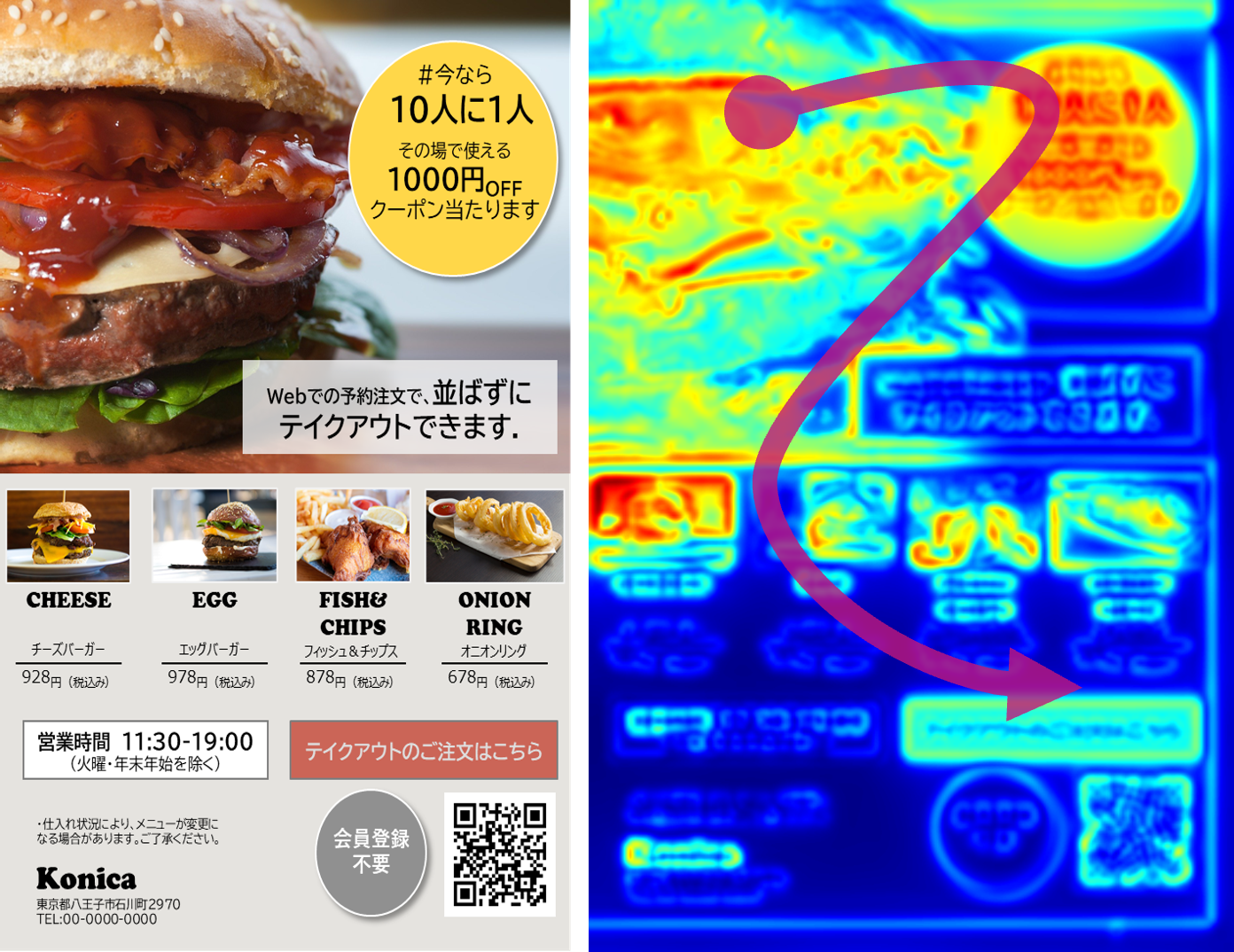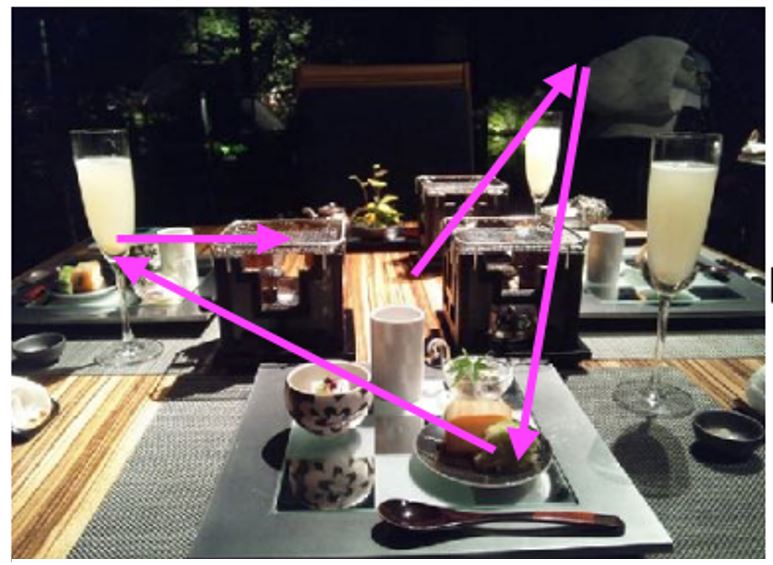
How to guide the eye? Types that can be used for marketing and points for implementation
When considering the design of product packaging, e-commerce sites, advertising media, in-store sales areas, etc., it is necessary to devise ways to smoothly support purchasing behavior, from awareness to consideration, purchase, and inquiries. One of the ways to do this is to use "gaze guidance."
In order to accurately convey the information you want to convey to consumers and increase their desire to purchase, it is important to design with the principle of eye guidance in mind.
For companies that are considering incorporating eye guidance into the design of packaging, e-commerce sites, sales floors, etc., some people may have questions such as ``What methods are there?'' and ``Are there any key points to follow when implementing this?'' it might be.
This article provides an overview of line-of-sight guidance, the main types of methods, and points to consider when implementing it.
Table of contents [hidden]
What is eye guidance?
Gaze guidance is a method of getting people to look at things in the intended order. By understanding the principles behind how people's gaze moves and arranging content accordingly, we can control the movement of the user's gaze.
It is incorporated when considering the design of product packaging, e-commerce sites, advertisements, etc., as well as when considering the planogram and layout of the sales floor.
In addition, by incorporating eye-direction techniques in the sales floor of a physical store, you can expect to have the effect of pinpointing a specific product, making it easier to find the product you are looking for, and making it easier for people to pick up the product.
In addition, this article provides a detailed explanation of store planograms to increase consumers' desire to purchase. Please also check.
How to guide your eyes! Basic types and patterns
In addition to the basic types of line-of-sight guidance, there are several patterns to support line-of-sight movement. The characteristics of each are as follows.
Basic types of line-of-sight guidance
There are three basic types of eye guidance.
1. Z-shaped pattern
The Z-shape is a pattern in which the line of sight moves in the order of upper left → upper right → lower left → lower right, like drawing the letter “Z”.
It is said to be the movement of the eyes that a first-time user makes when looking around the whole thing. It is generally used for horizontally written text where all information has the same importance level, and this pattern is mainly used in sales floor displays.
2. F type pattern
The F-type is a pattern in which you lower your line of sight as you draw the letter "F" from upper left to upper right to lower left to lower right to lower left.
It is said to be the movement of the user's gaze when understanding or digging deeper into the information they have obtained. It is often used for website designs that center on textual information, such as news and column sites.
3. N-type pattern
N-type is a pattern in which the line of sight moves in the order of upper right → lower right → upper left → lower left, like drawing the letter “N”.
This is said to be a common eye movement when reading Japanese text, which is generally written vertically.
Elements that support eye movement
Incorporating elements that support eye movement is expected to have the effect of making it easier for users to control their viewpoint. There are three main elements:
1. object size

Human eyes tend to move from large objects to small objects.
This applies not only to images but also to text. By adding contrast to the size of objects, it becomes easier to guide the user's gaze.
2. Object shape and color

When the information is uniform, the eye tends to move toward objects that have the same shape or color as a certain object.
By using the same shape and color, you can create an overall sense of unity.
3. number order
People's gaze tends to move according to the numbering.
This is useful when you want to create a layout that differs from the basic eye movement described above or a layout that is not aligned.
Points to remember when guiding your eyes
When incorporating eye guidance into product packaging, e-commerce sites, advertising media, etc., it is important to devise ways to prevent information from being scattered. In order to guide the user's gaze smoothly, you need to keep the following points in mind.
① Prioritize information
The key is to think about who you want to convey and how you want them to feel, organize your targets and objectives, and then prioritize the information.
You can increase your appeal by determining the priority of the information you want to convey, arranging the content according to the basic pattern of eye movement, and adding contrast to objects.
② Place important information at the top
People's gaze tends to flow from top to bottom regardless of whether it is printed or web media, so it is effective to place the information you want to convey or the points you want to appeal to at the top.
On the sales floor, products that you want to highlight are often placed in the center, at eye level, so that they are easy to see even in a store with many products lined up.
It is also effective to scientifically analyze designs using gaze prediction.
When guiding people's eyes, it is important to understand the principles behind how people's eyes move and position content accordingly. To this end, there is a way to use analysis tools to visualize things such as ``which parts attract attention'' and ``which parts are likely to be looked at for a long time.''
By scientifically analyzing how consumers view packaging, e-commerce sites, sales floors, etc., we can consider designs and layouts that encourage purchasing behavior.
"Explainable KANSEI" scientifically explains the act of "seeing" based on the cognitive theory of human brain science. By analyzing and extracting issues from each element of AIDMA (*) regarding the process when people purchase, you can consider how to guide the eye to sell products.
*AIDMA is an acronym for Attention, Interest, Desire, Memory, and Action, and is a model that constitutes a standard purchasing process.
summary
In this article, we explained the following about eye guidance.
- Overview of eye guidance
- Basic types and patterns of line-of-sight guidance
- Points to remember when guiding your eyes
- A tool to scientifically analyze gaze prediction
By understanding the principles behind how people's gaze moves and controlling the movement of the user's gaze, you can expect to be able to deliver information in an easy-to-understand manner and strongly emphasize your main points. This can encourage purchasing behavior.
The key is to incorporate basic line-of-sight guidance patterns and elements that support line-of-sight movement, and to devise the location and order of content, the size and color of objects, etc.
It is also effective to use analysis tools to predict the user's gaze.
Konica Minolta's ` Explainable KANSEI'' visualizes human sensibilities based on kansei brain engineering and enables quantitative analysis of designs. By analyzing the impression and attention level of advertisements, it becomes possible to create advertisements that are more suitable for the target, which supports consumer purchasing behavior.
For more information on Explainable KANSEI, please see this document.




